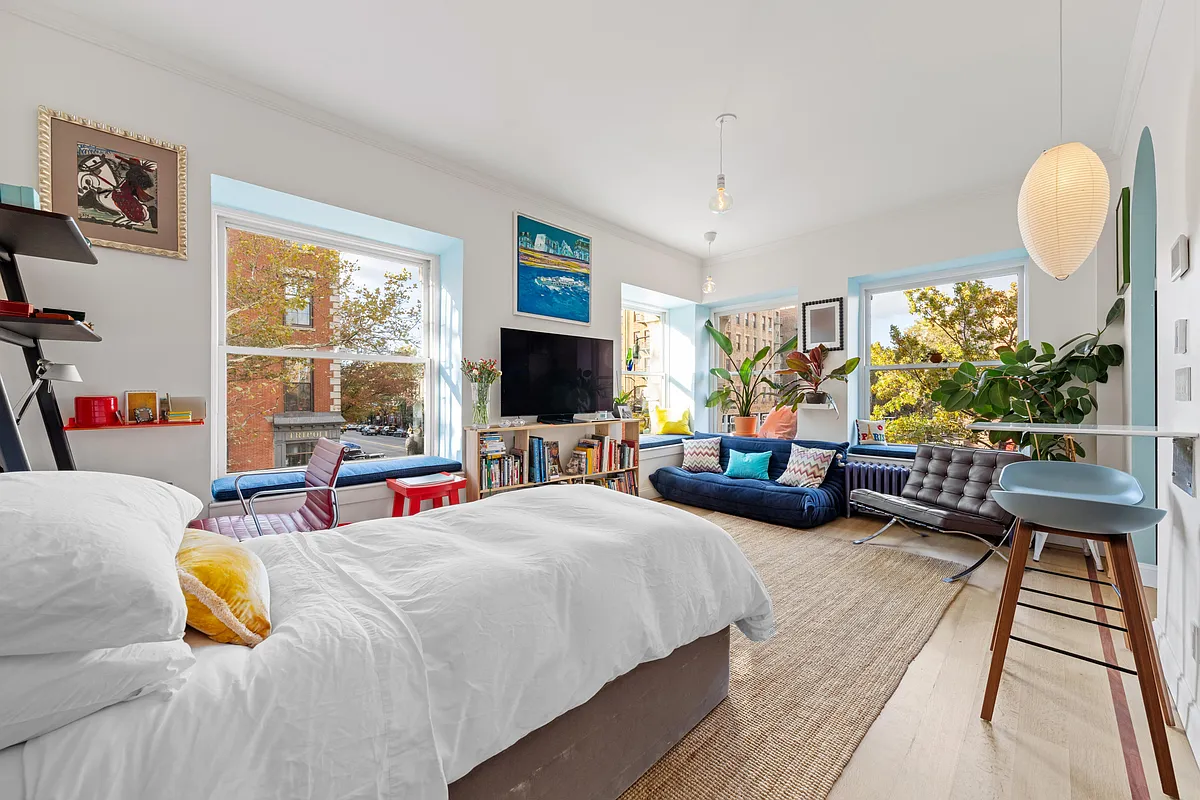How the Financial Crisis May Not Be So Bad for New York
We just got around to reading the cover story of the current issue of The Atlantic Monthly called How the Crash Will Reshape America. One of the article’s central points is that while hubs of intellectual and creative capital like New York will surely suffer in the economic crisis, they will suffer a lot less…


We just got around to reading the cover story of the current issue of The Atlantic Monthly called How the Crash Will Reshape America. One of the article’s central points is that while hubs of intellectual and creative capital like New York will surely suffer in the economic crisis, they will suffer a lot less than second-tier cities, the suburbs or industrial areas and therefore benefit on a relative basis. While there has been much hand-wringing about New York’s reliance upon the finance industry, many other smaller cities, it turns out, are much more reliant: Hartford, Des Moines and Charlotte, to name a few. Rather, New York is an incredibly diverse place which should be well-positioned to reinvent itself faster and more efficiently than other places:
New York is much, much more than a financial center…It is home to a diverse and innovative economy built around a broad range of creative industries, from media to design to arts and entertainment. It is home to high-tech companies like Bloomberg, and boasts a thriving Google outpost in its Chelsea neighborhood… New York is more of a mecca for fashion designers, musicians, film directors, artists, and—yes—psychiatrists than for financial professionals…The financial crisis may ultimately help New York by reenergizing its creative economy…Place still matters in the modern economy—and the competitive advantage of the world’s most successful city-regions seems to be growing, not shrinking…Talent-rich ecosystems are not easy to replicate, and to realize their full economic value, talented and ambitious people increasingly need to live within them…Economic crises tend to reinforce and accelerate the underlying, long-term trends within an economy [like the map of per capita patent creation above]… In this case, the economy is shifting away from manufacturing and toward idea-driven creative industries—and that, too, favors America’s talent-rich, fast-metabolizing places.
Sounds good so far, right? Here’s how the trends will play out on the American landscape, according to the author Richard Florida:
What will this geography look like? It will likely be sparser in the Midwest and also, ultimately, in those parts of the Southeast that are dependent on manufacturing. Its suburbs will be thinner and its houses, perhaps, smaller. Some of its southwestern cities will grow less quickly. Its great mega-regions will rise farther upward and extend farther outward. It will feature a lower rate of homeownership, and a more mobile population of renters. In short, it will be a more concentrated geography, one that allows more people to mix more freely and interact more efficiently in a discrete number of dense, innovative mega-regions and creative cities. Serendipitously, it will be a landscape suited to a world in which petroleum is no longer cheap by any measure. But most of all, it will be a landscape that can accommodate and accelerate invention, innovation, and creation—the activities in which the U.S. still holds a big competitive advantage.
Sounds like we’re sitting pretty, huh?
How the Crash Will Reshape America [The Atlantic]





Nobody here argues against living in NY. Actually everybody lives close by and pays a premium for that.
However housing prices are inflated and due for a correction.
You people will glean the media to find an excuse for high prices but no you are not sitting pretty.
Nothing wrong with hating the Yankees, even if you live in NYC.
Ledbury: exactly. NYC requires a premium to live close by but that does not mean that this premium has not been inflated as well during the bubble.
Even if NYC RE prices are cut in half housing here will still be expensive compare to the rest of the country.
All cities benefited from this trend of migration to cultural capitals, L12, but good lord, you can’t claim Atlanta and Orlando property values are not in terrible shape and getting worse. It’s terrible down there right now. As for people wanting to live in Atlanta more than NYC, literally everybody I know from Georgia in media or the arts is already living in NYC and have been for years. (Apologies to Rob, I’m talking about what my friends think!) The only people who “hate yankees” in the South are those who have nothing to do with the arts, therefore have nothing to do with the subject of this article or this thread so hmm, why are they even mentioned.
you just said a few posts up that everyone who is creative WANTS to. and im very intellectually curious btw with interests in lots of things. lots of trashy things too,but that’s okay 🙂
*R*
“most of my friends hate yankees and are staying in the south.”
Where they belong.
Give it a rest and actually talk about something important, will ya?
No one is saying everyone is moving to NYC or to Park Slope.
This is an interesting article with a lot of validity, but I can’t help but think that we are making a causal link that is somewhat faulty.
The NYC real estate bubble was very much driven not by overdemand for units (ie people who needed housing),but by overdemand in terms of % of wealth being spent on housing. The last 10 years didn’t see a massive jump in the ratio of new yorkers to housing stock. So while yes, NY would figure to continue to be one of, if not the preferred, urban center in America, that doesn’t actually have that much to do with where ultimately housing prices bottom out at (Ok, obviously it has something to do with it, but I am pretty sure that southern California isn’t becoming a ghost town anytime soon either.)
As a fairly absurd illustration, think not of cross occupational workforce, but of a massive group of homeless people with free range to move anywhere they want. Many would probably congregate in a year round temperate climate with good public services. Just because the assets of that city are very in demand doesn’t mean that the people demanding it can pay higher prices. Ultimately NY prices will be driven by the change in wealth being spent on housing during the bubble and that being spent in the future which still figures to be a fairly hefty amount.
Considering how little this country learned after the oil shocks of the 1970s, I don’t see most Americans hopping on this smaller carbon footprint bandwagon any time soon. I wish they would, but I don’t see it.